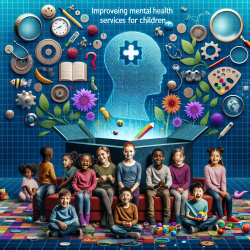Introduction
In today's rapidly evolving world, enhancing children's mental health services is more crucial than ever. With one in five youth facing diagnosable mental health issues, the need for effective, accessible, and equitable mental health services is pressing. The research article "Designing the Future of Children’s Mental Health Services" sheds light on how we can achieve this by leveraging human-centered design (HCD).
What is Human-Centered Design?
Human-Centered Design (HCD) is an approach that aligns product development with the needs of the people and settings that use those products. By focusing on the users, their needs, and requirements, HCD aims to create systems that are not only usable but also contextually appropriate. This approach is particularly beneficial in the realm of youth mental health services, where the needs are diverse and complex.
Key Takeaways from the Research
The research emphasizes the importance of designing mental health services that are:
- Accessible: Streamlined and scalable designs make services easier to adopt and sustain.
- Effective: Engaging and targeted interventions ensure better outcomes.
- Equitable: Contextually appropriate and culturally relevant services address disparities in mental health care.
Implementing Human-Centered Design in Practice
Practitioners can improve their skills by incorporating HCD principles into their work. Here are some steps to consider:
- Engage Stakeholders: Involve children, parents, and educators in the design process to ensure that services meet their needs.
- Iterative Prototyping: Develop and test prototypes to refine services based on user feedback.
- Focus on Usability: Ensure that services are easy to use and integrate seamlessly into existing workflows.
- Address Cultural Relevance: Tailor services to fit the cultural and contextual needs of diverse populations.
Encouraging Further Research
While the research provides a strong foundation, there is always room for further exploration. Practitioners are encouraged to delve deeper into the principles of HCD and explore how they can be applied to their specific contexts. By doing so, they can contribute to the ongoing improvement of children's mental health services.
To read the original research paper, please follow this link: Designing the Future of Children’s Mental Health Services.










